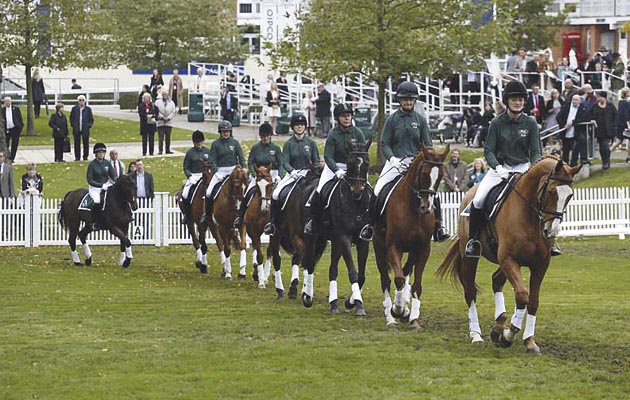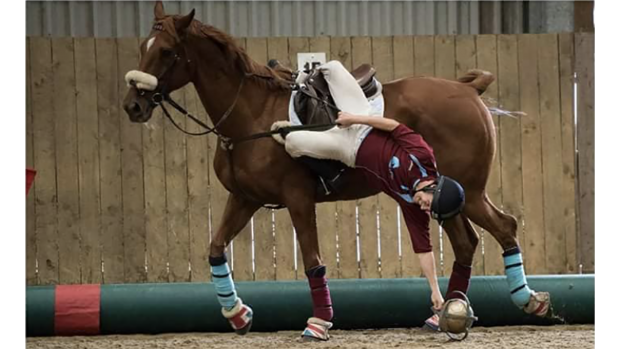As well as displaying their talents in the worlds of dressage, showing and eventing, many former racehorses are now finding a new career playing horseball.
The thoroughbreds have become particularly prized in the top echelons of the sport, with 13 out of the 16 current British team horses having retired from the track.
To showcase their talents, the British Horseball Association and Retraining of Racehorses (RoR) held an exhibition match at the 32Red Newmarket open weekend.
Eleven ex-racehorses took part in the event (17 September), at which jockeys also got to try their hand at the sport.
“The RoR have become quite heavily involved with us and sponsored a contribution towards our teams this year and last year. We do a lot of parades each year at UK racecourses,” said first division horseball player Jenny Hughes.
“A lot of players would rather have an ex-racehorse than anything else. More and more of them are coming into horseball and they’ve been brilliant at it. People are now actively going out and buying them for the job.”
The Horseball Association describes the sport as “a mix of polo, rugby and basketball”, with teams of six (four allowed on the pitch at any one time) competing to shoot a ball through a high net (measuring 1.5×1.5m).
A horseball horse requires some of the same attributes as a polo pony — although size is not as much of a critical issue.
“Even though we pick a ball up off the floor, we have the equipment to do that, so there is no height limit. While polo ponies are usually small, we have a whole team who play on 17.2hh ex-racehorses,” Jenny said.
“There are similarities in that it’s a similar kind of ball game and a similar kind of retraining — there are horses close together touching each other and the rider does a lot with their seat and leg and not much contact.
“We can take horses who are considered ‘too hot’ for polo though, because we play in an arena and we want that responsiveness. A hot horse who won’t stand still or is pacing might not suit polo but for us the anticipation works quite well in such a fast paced game.
“In higher divisions everything is quite quick and you can be galloping for 20 minutes. If you have a horse that has got that energy, for experienced players that works really well in your favour.”
The speed and agility of thoroughbreds make them an ideal choice for the sport and former racehorses have also proved straightforward to retrain.
“One thing that I think is really important is their attitude. I have an ex-racehorse I play on and he’s really trainable and willing to learn new things. From the environment they’ve been in they’re also usually really good with other horses, Jenny added.

Expert advice on how to train an ex-racehorse
We ask the experts what steps you should

Painting ex-racehorse Metro Meteor signs his own book
Thoroughbred Metro Meteor has made an impact in

9 things ex-racehorse owners get sick of hearing
“They pick it up so quickly as it’s a relaxed environment where they can trot round with other horses, so they feel comfortable.
“Once they’ve played a while they soon understand their job. My ex-racehorse definitely switches on when he’s playing and he loves it.”
For all the latest news analysis, competition reports, interviews, features and much more, don’t miss Horse & Hound magazine, on sale every Thursday.




